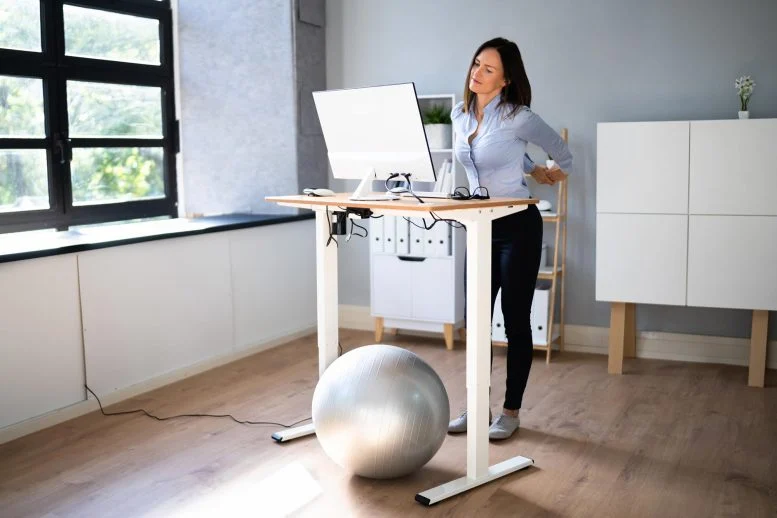Sydney, October 16, 2024 – Standing desks have been hailed as a solution to the health risks associated with prolonged sitting, with many office workers and professionals adopting them to combat the negative effects of a sedentary lifestyle. However, a new study from the University of Sydney suggests that standing desks may not provide the cardiovascular benefits many people expect and might even contribute to other health issues.
The research, published in the International Journal of Epidemiology, challenges the notion that standing more during the day can protect against heart disease, stroke, or heart failure. In fact, the study found that prolonged standing could increase the risk of circulatory problems such as varicose veins and deep vein thrombosis (DVT). Lead author Dr. Matthew Ahmadi and his team concluded that standing for long periods does not significantly improve heart health over time.
Sitting for Extended Periods Still Harmful
While standing desks may not offer the cardiovascular benefits once believed, the study did reinforce the dangers of prolonged sitting. The researchers found that sitting for more than 10 hours a day can raise the risk of cardiovascular disease and orthostatic complications, which are related to blood pressure regulation when standing up.
However, Dr. Ahmadi emphasized that simply standing more is not a solution. “Standing for too long will not offset an otherwise sedentary lifestyle and could even pose risks for circulatory health,” he explained.
The Importance of Movement
Rather than relying on standing desks, the researchers recommend incorporating regular movement throughout the day to reduce cardiovascular risk. Professor Emmanuel Stamatakis, co-author of the study and Director of the Mackenzie Wearables Research Hub, highlighted the importance of physical activity.
“For those who sit for long periods, it’s crucial to break up the day with movement. Whether it’s a quick walk, a standing meeting, or climbing the stairs, these activities can make a significant difference,” Stamatakis said. He also emphasized the importance of structured exercise, particularly as Australia enters the warmer months, ideal for sun-safe outdoor activities.
Previous research by the same team found that as little as 6 minutes of vigorous exercise or 30 minutes of moderate-to-vigorous activity daily can help reduce heart disease risk, even for people who are highly sedentary.
Study Details and Implications
The study analyzed data from over 83,000 adults in the UK who were free of heart disease at the start. The participants’ activity levels were measured using wearable devices over a seven-to-eight-year period, providing robust insights into how different levels of activity and inactivity affect long-term health outcomes.
The findings highlight the complexity of balancing physical activity with sedentary work. While standing desks have become a popular workplace trend, the researchers urge people to adopt more effective strategies to protect their cardiovascular health, such as regular breaks for movement and structured exercise routines.
A New Perspective on Workplace Health
The study calls into question the widely accepted belief that standing desks are a key tool for improving heart health. While the desks may reduce back pain or improve posture for some, they are not a substitute for regular movement and exercise.
For those looking to improve their cardiovascular health, the message is clear: prioritize movement over standing. Incorporate short walks, stair climbs, and exercise into your daily routine for long-term heart health benefits.
Reference: “Device-measured stationary behaviour and cardiovascular and orthostatic circulatory disease incidence” by Matthew N. Ahmadi, Pieter Coenen, Leon Straker, and Emmanuel Stamatakis, 16 October 2024, International Journal of Epidemiology.












